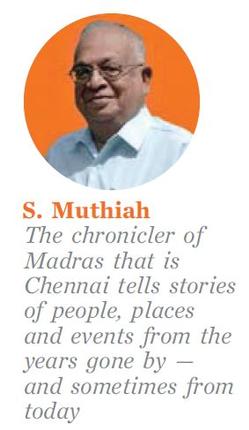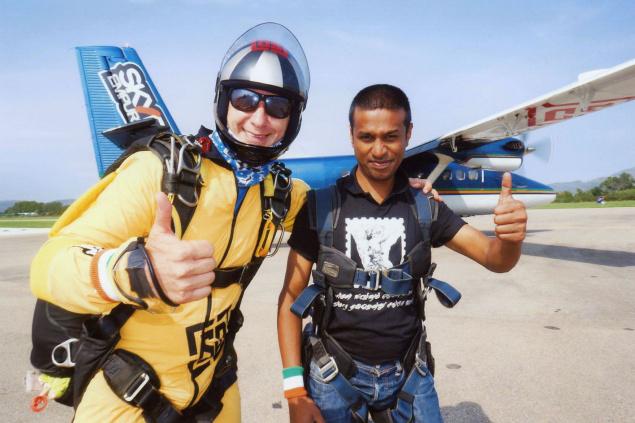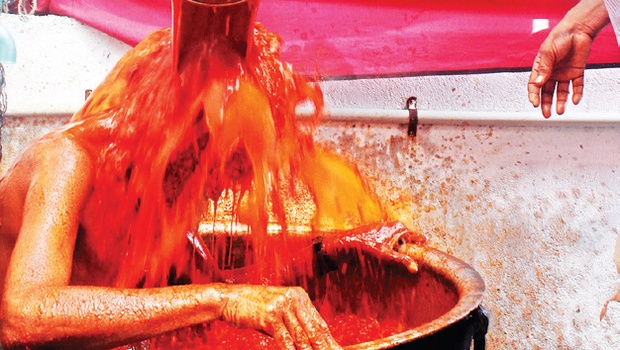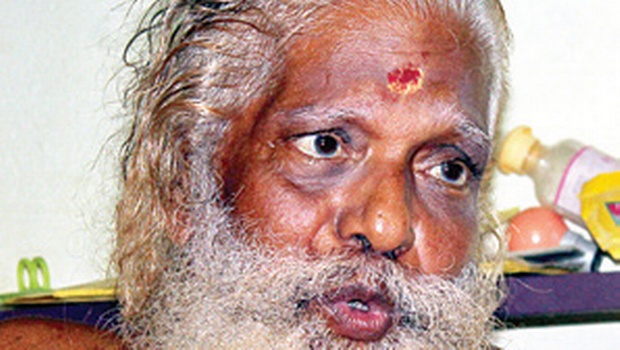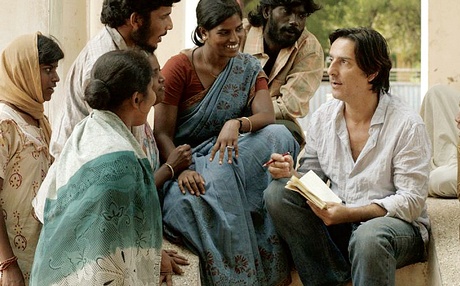The news that the Schmidt Memorial on Elliot’s Beach was being restored and the area around it landscaped is welcome indeed. But while this memorial has kept alive for several decades memories of the courage of a young Danish mercantile executive (Miscellany, September 23, 2013), there have been at least two other persons with Danish connections in the city’s past who deserve commemoration for significant contributions they made to Madras — and even to India.
John Goldingham was of Danish descent but was more British than Dane. He was the first official head of the oldest modern observatory in the country and of the oldest modern technical school in Asia, both surviving to this day. But better remembered is what was considered his patron Lord Edward Clive’s folly — or entertainment space. Built by Goldingham to host the Governor’s Council, thisAssembly Hall became better known as Banqueting Hall (and should I say ‘Ballroom’?) but today languishes as Rajaji Hall. Making me wonder how this splendid building can be revived and given new life.
Goldingham’s contributions may be remembered by a few, but very, very few outside the scientific community are likely to remember a German who made Denmark his home and later contributed significantly to India. Dr. Johann Gerhard König was a Danish-trained physician who served the Madras Government in the late 18th Century but became better known as ‘The Father of Indian Botany’, with scientific botany in India emerging through his efforts.
Born in what is now Latvia, König moved to Denmark in 1748 to study and became a private pupil of Linnaeus at Uppsala University from 1757. He lived and worked in Denmark till he came out to Tranquebar in 1768 to serve the Danish Halle Mission as its medical officer. Simultaneously, he worked with the Nawab of Arcot as his Naturalist and travelled throughout his domain (virtually what became the Madras Presidency) and Ceylon. In 1778, he was appointed the East India Company’s first Natural Historian /Naturalist/ Botanist and served in that capacity till his death near Vizagapatam in 1785. Amongst those who benefitted from his training them as naturalists were the Rev. Christoph John and Rev. Johann Rottler in Tranquebar and William Roxburgh in Madras. It was Roxburgh who treated him during his last days in what is now Andhra Pradesh when dysentery was felling him. J. König, a name to reckon with in Indian botanical terminology, was responsible for South India being the earliest centre for botanical and zoological research in the country.
Until König came along, plants found in India by the ‘greens’ were sent to Europe to be classified and described by scientists like Linnaeus and others. König introduced the Linnaean rules in India and was soon followed by others. Many of these students of Indian vegetation in the Peninsula and Ceylon, like James Anderson, Francis Hamilton-Buchanan, Roxburgh, Rottler, and John and a few others formed a society to promote botanical studies, exchanged specimens and information on new species collected, and, acting in concert as a society, named them. But as they became more confident of their botanical knowledge, some of them began naming their finds themselves without consultation. All this information was sent by them to European botanists who published the information under the names sent to them or under names they had changed the originals to. Later authors of botanical information, like Edward Balfour and Robert Wight, tended to use the names in general use at the time, but also offered the synonyms that had been earlier used. One of the names listed is Murraya Königii, a species of curry leaves.
Footnote: Searching for material for this column constantly throws up new leads to follow. And while writing today’s piece I came across the name of Dr. Francis Appavoo. Here was an Indian who, as early as the 1860s, was in charge of the Conservator of Forests’ office in Madras. I wonder if anyone can tell me more about him.
*****
A commitment to restoration
I had met Father Vijay Kiran many years ago in the Archbishopric’s archives and had been very pleased to meet someone who was more than an administrator, who was, in fact, a person who valued the riches he was in charge of. When I heard he had been transferred, I was rather dismayed because it would have been difficult to find someone who would have appreciated as much as him the history of the archdiocese. I was therefore delighted when I met him the other day to find that his interest in the past had led him to becoming a committed conservationist, now calling on his fellow Roman Catholic clergymen to maintain, and restore where necessary, their churches.
When I met Fr. Kiran a couple of weeks ago, it was at a viva for his second doctorate. His thesis this time was Conservation of Church Architecture (Buildings) and Their Artifacts in Tamil Nadu, and it was an excellent presentation that he made of it, ending with an appeal to parish priests to ensure regular maintenance of their churches and restoration of them if they were heritage buildings. Towards this end, he urged the support of the archdioceses.
After the presentation, I was rather surprised when an elderly, rather well-spoken man, who I got the impression was a retired priest, wondered whether it was really necessary to restore old churches when it was so much less expensive to build new ones to suit the congregations of today. He had me wondering whether, with his obviously cultured background, he really appreciated the cinematic elements that have been creeping into representations in many churches, whether all new churches had to sport St. Peter’s domes, and whether, if heritage was not particularly important, the leaders of faiths for hundreds of years should be forsaken for new messiahs.
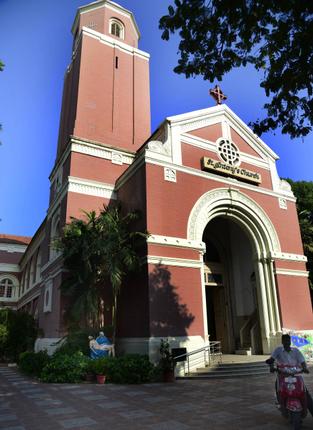
Be that as it may, what was particularly pleasing was to hear that Fr. Kiran had during his three-year parish priesthood at St. Anthony’s, Pudupet, collected over Rs. 25 lakh to restore that 80-plus-year-old church using the best possible conservation practices that he had read about and heard of from a few conservationists. With this knowledge he had supervised the entire work — and now it only needed regular maintenance to retain its attention-drawing appearance.
There is a tradition that the French Capuchins had ministered to the needs of the rather impoverished Roman Catholics of Pudupet before it became the parish of Pudupet in 1873, a part of the then Archdiocese of Mylapore. Fr. Y. Arulappa was appointed parish priest in 1909 and was to hold the post for the next 20 years. It was during his tenure that the Church of St. Anthony of Padua, the church restored by Fr. Kiran, was built, being consecrated in September 1927. Starting a collection drive in October 1920, Fr. Arulappa had funds enough by the end of the year to have the confidence to invite a papal dignitary to lay the foundation in January 1921. But collecting the funds to finish the work was a slow process.
Priests who succeeded Fr. Arulappa embellished the church over the years that followed — a pale wooden altar was replaced by a gleaming ebony one, the interior was painted and improved with paintings, and other elements of beauty were added. All those and the building itself have now been restored — an example for the nearly 1,200 Catholic churches in Tamil Nadu, about 375 of which date to before 1947 and considered by Fr. Kiran, who visited and listed all of them for his thesis, as heritage churches. He hopes his lead will be followed in other States and by other denominations. For me, it was great to find a fellow-enthusiast for heritage.
******
When the postman knocked…
* Does John Pereira’s Garden still exist and, if so, where, wonders reader Raymond Pereira. I don’t know whether my correspondent is a descendant of John Pereira, but I can only disappoint him. To the best of my knowledge, the garden, once a small coconut thope at the southwest extremity of Peddanaickenpet, in the vicinity of where the General Hospital was developed, no longer exists, being completely built over. It belonged originally to Joao Pereira de Faria (John Pereira), a prosperous merchant of Negapatam (Nagapattinam), who fled the Dutch occupation and re-settled in Madras in 1660 with a house in White Town (Fort St. George). The Fort had 118 houses within it at the time, 79 of them belonging to Portuguese merchants and employees of the East India Company. Pereira’s daughter Escolastica married Cosmo Lourenco Madera (or Madeiros) who built the Descanco Church on St. Mary’s Road, Mylapore. Their son, the merchant-seafarer Luis Madera, was the owner of the garden house that his widow Antonia Madeiros sold to Governor Saunders and which became the nucleus ofGovernment House, so rudely pulled down not so long ago to build a new legislature that has now been transformed into a hospital.
* My reference the other day to the statue of Rev. G.U. Pope on the Marina (Miscellany, September 8), had K.V. Iyer asking me whether I knew that Pope owed his Tamil scholarship to Ramanuja Kavirayar. Not only did I not know that, but I must confess that I had not heard of Pope’s guru. I did, however, go a-digging and found that this Ramanathapuram-born scholar was in his thirties when he come to Madras in 1820 and began bringing out in print for the first time the Tamil classics with commentaries. But simultaneously he began gaining a reputation as an outstanding teacher of Tamil. Among his pupils were Pope (who acknowledged him as “my first teacher of Tamil”), the Rev. Myron Winslow, the Rev. W.H. Drew and the Rev. C.T. Rhenius. He helped Winslow with his English-Tamil dictionary and Drew with his translation of the Thirukkural into English. The other two missionaries also owed much to his advice for the literary works they produced. But from all accounts, despite his contribution to Tamil literature, Ramanuja Kavirayar was best known as an outstanding scholar and teacher.
source: http://www.thehindu.com / The Hindu / Home> Features> MetroPlus / by S. Muthiah / September 28th, 2014
